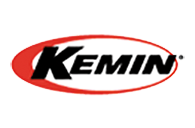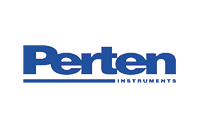In an unprecedented step, President Joko Widodo ‘Jokowi’ the president of Indonesia gave just a 24-hour notification that he intended to visit Indonesia’s leading livestock and animal feed exhibition being held at the Jakarta Convention Centre in the heart of the city, on the afternoon of the closing day.
For those who had stayed to the end, or who were visiting on the last day, it was an extraordinary scene when his entourage entered the main Convention Centre which was dominated by the stand of Indonesia’s leading feed manufacturer, Charoen Polphand Indonesia.
Our interview this month reflects the views of Indonesia’s President, President Joko Widodo ‘Jokowi’ - and not his direct quotations - about the importance he and his government place on the development of the livestock and aquaculture industries and the support provided by the feed manufacturing industry, both locally and internationally.
It is a pleasure to see the importance the leader of this country places on the foundations of food production. He stayed at the exhibition for a full one-and-a-half hours talking to exhibitors from both local and international companies.
How important is farming to Indonesia?
The farms in our country today are growing fast. This I witnessed at Indo Livestock 2018 Expo & Forum in Jakarta, yesterday.
The grand exhibition of livestock, animal health, animal feed, dairy processing and fisheries illustrates the development of farms throughout our country.
I was pleased to see that post-commercial products are starting to be exported. For example, such products as nuggets and sausages have now entered Japanese market and then later into Vietnam and Malaysia.
Are international companies playing an important role in the development of the food industry in Indonesia?
Exhibitors come from home as well as from abroad. Those from within the country have begun to introduce modern equipment. One of them, Micro Bubble Technology for example can increase fish production in ponds by up to 30-40 percent.
I am also impressed with the chicken breeding industry that is able to produce up to 100,000-day-old chicks. In the past, the organic chicken industry was expected to disappear.Now it’s even more productive.
In his opening speech at the Jakarta Food Security Summit 2015 in the same Convention Center, President Joko Widodo ‘Jokowi’ said he is optimistic Indonesia would reach self-sufficiency in food production in the next four years as the country has the resources to do so if farmers can ‘upscale’ to national levels.
The more I learn of the field conditions of our country, the more I’m convinced that in the next four or five years, we’ll be able to achieve the so-called food self-sufficiency, food security and food sovereignty.
Some of the farmers say they used to produce only two [metric] tonnes [of farming products] and then it became four tonnes, six tonnes and now eight tonnes. Some others said their production was only one-and-a-half tonnes, and now it has become three tonnes. We’ve seen and heard about those multifold production increases. These are examples of that.
According to President Joko, his confidence grew after many exchanges with Indonesian farmers and fishermen, who reported to him that their production or catches had been steadily increasing over the years.
We can copy the productive farming practices and apply it nationwide. My feeling tells me that upscaling can be accomplished in just three or four years.
Background
President Joko Widodo ‘Jokowi’ was born on June 21, 1961 and is the seventh and current President of Indonesia - elected in July 2014 as the first Indonesian president to not come from an elite political or military background. He was previously mayor of Surakarta from 2005-12 and the Governor of Jakarta from 2012-14.
Food security is one of President Joko Widodo ‘Jokowi’s chief economic concerns, but his policy has primarily aimed at making Indonesia self-sufficient in rice, the country’s staple diet - and in maize.
His focus on food production and the growing support for greater self-sufficiency by encouraging local production through the introduction of higher duties on imports might have a knock-on effect on local soybean production for instance.
Today, the government is placing more emphasis on food self-sufficiency. The government has recently scrapped subsidies for gasoline but still subsidises diesel and liquid petroleum gas.
Finance Minister Bambang Brodjonegoro has said that for the first time in Indonesian history the amount by which food is subsidised, nearly matches that of fuel. The subsidy related to food accounts for R55.6 trillion (US$4.3 billion).
The president and his vice president, Jusuf Kalla, have met with 102 district heads to discuss Indonesia’s ambition to be self-sufficient in food production. The president says the food sector is one of his administration’s priorities, stressing the importance of land reform, optimising irrigation, increasing productivity and farmers’ welfare.
The country has 31 flour mills with a capacity of 11.5 million tonnes (Bogasari accounting for over half of the country’s flour production) and is complimented with 85,000 tonnes on imported flour products coming from Turkey, Philippines and Canada to provide the population with over 23kg of flour per person per year.
Industry sources attribute the recent jump in wheat imports to the increase in demand for animal feed, particularly poultry, rather than direct human consumption. Franciscus Welirang, the head of the Indonesia Flour Mills Association (Aptindo), said the country had only started using wheat in place of corn as the main ingredient for animal feed. The government’s policy to restrict corn imports to protect local production has forced producers of animal feed to turn to wheat.
However, feed production in Indonesia is at an all-time high of 19.4 million tonnes per year from 70 feedmills. The country has a ‘per capita consumption’ of compounded feed in the order of 72.7kg/head, which is just over half that required to become food secure.
fter four years in office, President Widodo’s approval ratings remain high. With ratings in the high-60s to low-70s, President Joko Widodo ‘Jokowi’ will be seeking re-election in 2019.































